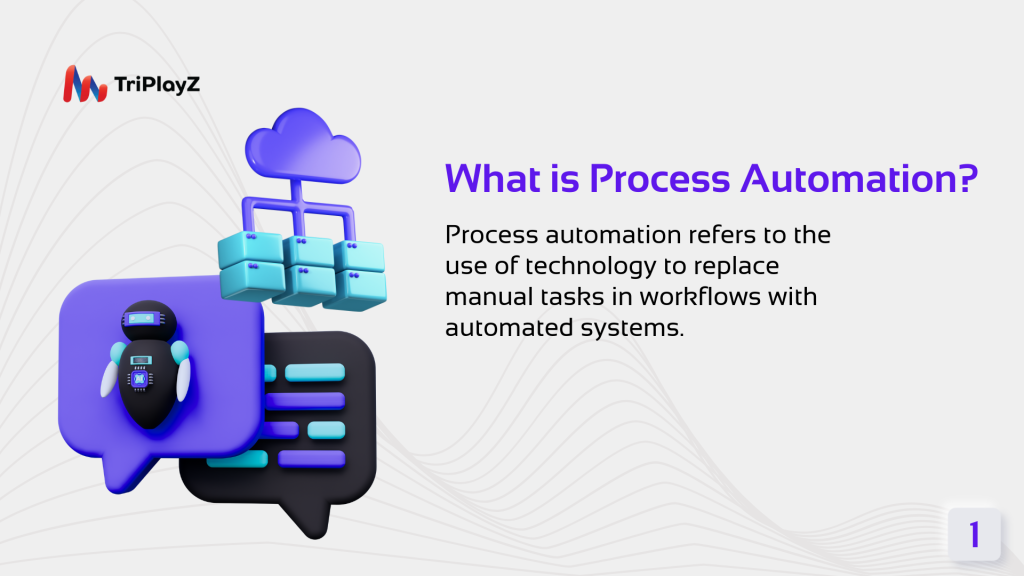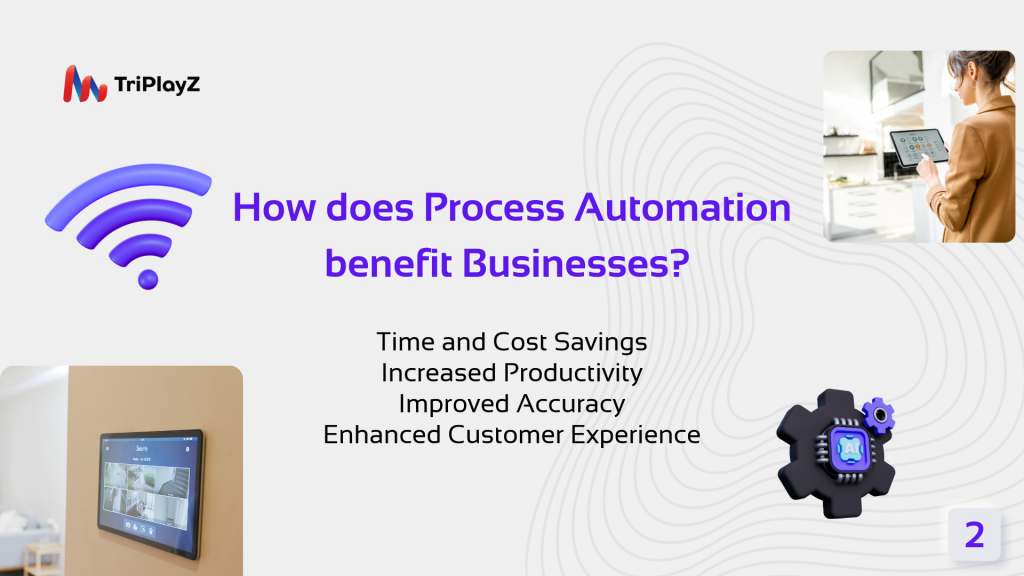In the era of Industry 4.0, businesses are increasingly focused on optimizing their workflows to boost efficiency, reduce costs, and enhance customer experience. Automating business processes through technology solutions has become a key approach to achieving these goals. This article will help readers understand what process automation is and explore how it can be flexibly applied to improve business performance.
What is Process Automation?

Process automation refers to the use of technology to replace manual tasks in workflows with automated systems. The goal is to make processes faster, more accurate, and more consistent, which helps save time, cut operational costs, and increase productivity. Process automation is typically applied to repetitive tasks like data entry, approvals, email dispatch, and invoice processing across departments such as accounting, HR, customer service, and operations.
How does Process Automation benefit Businesses?
Integrating automation into business processes offers a variety of practical benefits

Time and Cost Savings:
Automation reduces time and costs by quickly handling repetitive tasks like data entry, email correspondence, or invoice processing. This eases the workload on staff, allowing for more effective use of resources while maintaining smooth operations. According to McKinsey, automation can save 20–30% of work time, and Deloitte reports operational cost reductions of up to 50%.
Increased Productivity:
Automation enables businesses to handle larger workloads without hiring more staff. Studies show that implementing automation can boost productivity by up to 30%. By removing repetitive manual tasks, employees can focus on higher-value activities.
Improved Accuracy:
Automation minimizes human errors in critical processes such as accounting, data management, and customer support. Automated systems help reduce risks and maintain consistency across workflows.
Enhanced Customer Experience:
Tools like chatbots, auto-reply emails, and support software help businesses engage customers swiftly and accurately. AI-powered customer service can increase satisfaction by 15–20%, improving customer loyalty and driving revenue growth.
Where should Businesses start with automation?

Implementing automation doesn’t have to be complex or expensive. Here are five areas where businesses can start right away
Customer Management and Marketing:
Platforms like Mailchimp or HubSpot allow businesses to automate email campaigns and personalize marketing content for different customer segments, boosting campaign performance and saving marketers’ time.
Internal Operations and Task Management:
Tools such as Trello, Asana, or Monday.com streamline task organization—from assignment to tracking—improving workflow and reducing internal redundancies.
Customer Support:
AI chatbots provide prompt assistance, automatically responding to FAQs and ensuring continuous customer care—even outside of business hours.
Finance and Accounting:
Software like QuickBooks or Xero simplifies financial processes—from invoicing to reconciliation—while significantly reducing manual errors.
Inventory and Logistics Management:
Automated technology in inventory and logistics helps businesses monitor stock levels, track real-time order statuses, and optimize the supply chain.
Conclusion
AI chatbots can automatically respond and categorize requests, easing the burden on support teams. In operations, platforms like Monday.com automate task assignments, reminders, and handovers to streamline workflows. In finance and accounting, tools like QuickBooks or SAP automate invoicing, reconciliation, and reporting to reduce manual errors. For marketing, HubSpot helps personalize content and send automated emails based on customer behavior. In inventory management, ERP systems offer real-time updates, stock alerts, and optimized logistics. In HR, HRM software automates recruitment, attendance tracking, and payroll, saving time and improving administrative efficiency.




